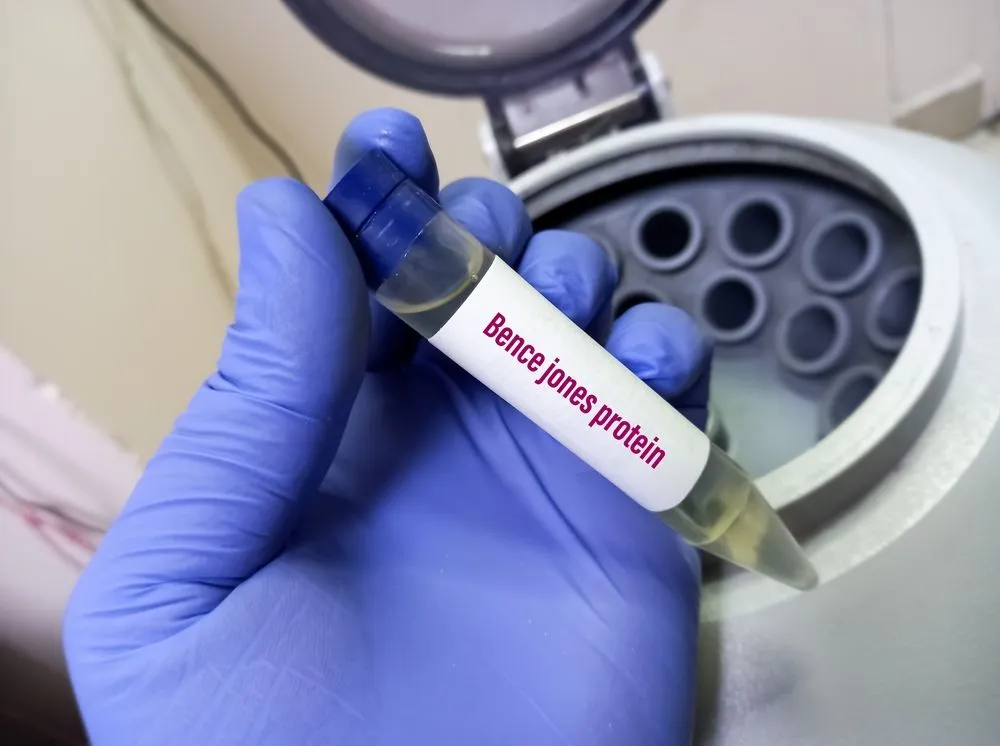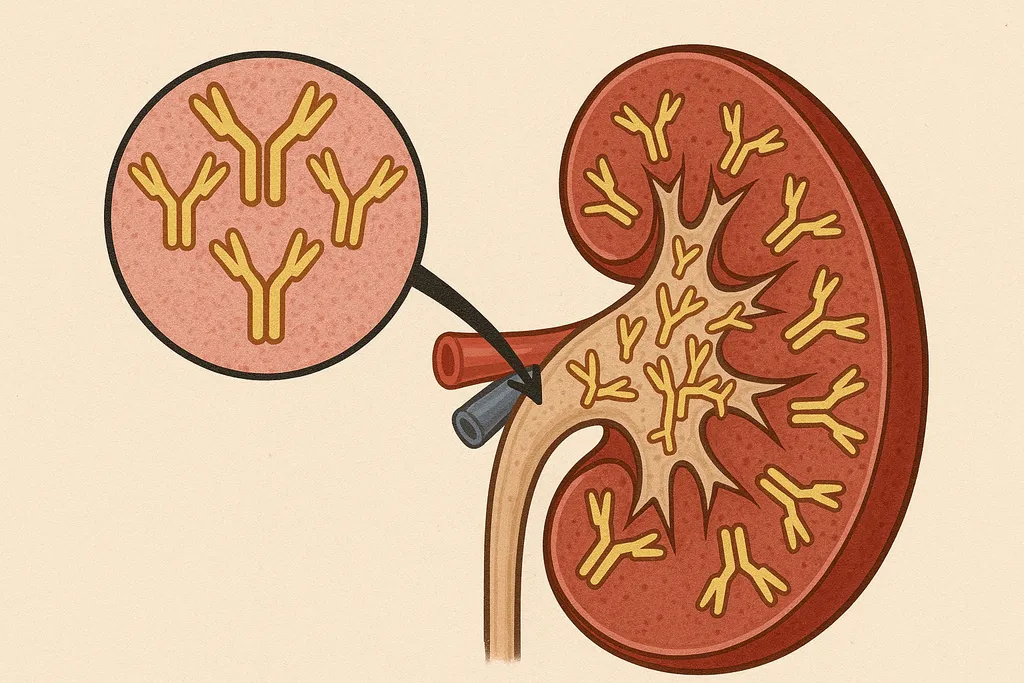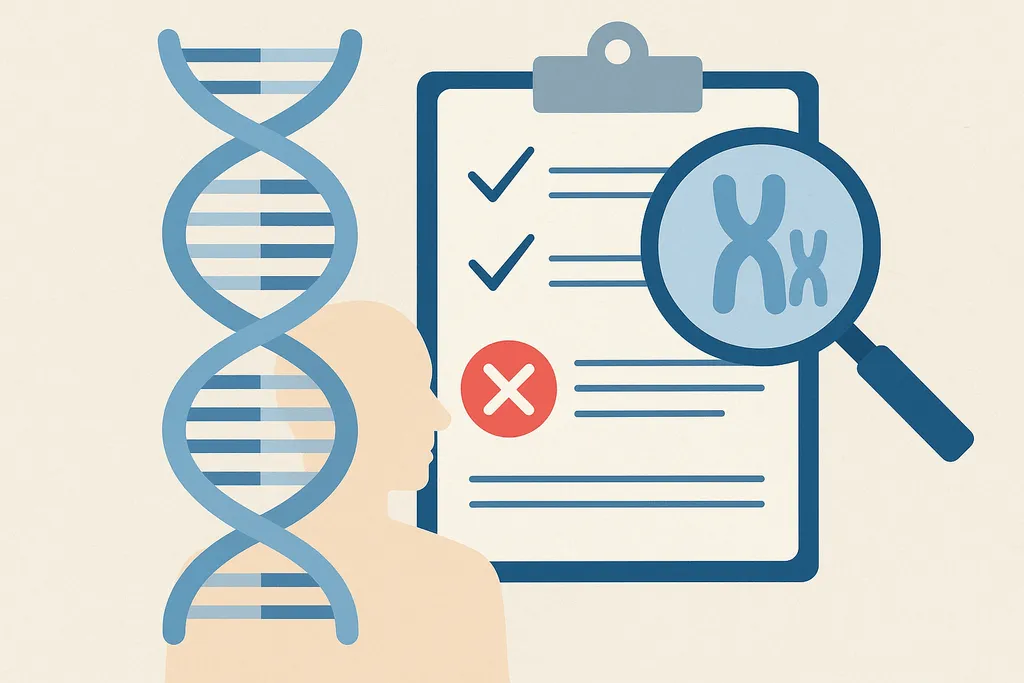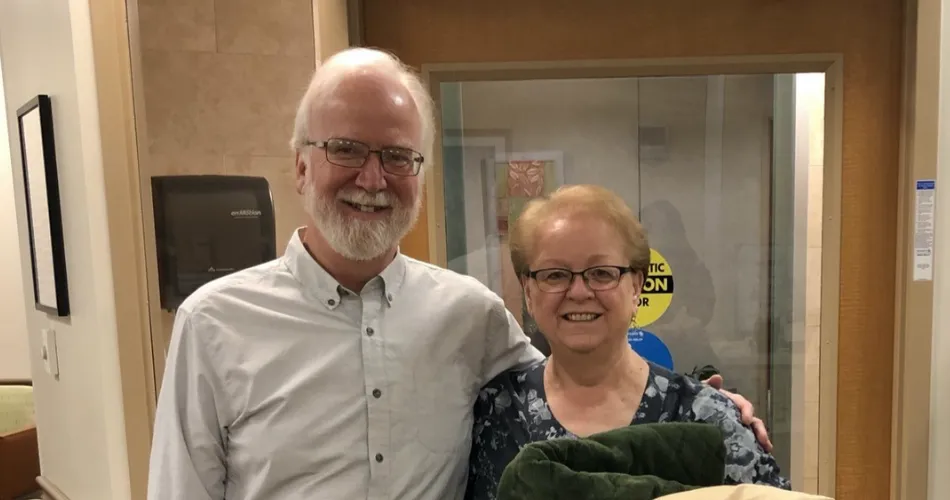A Love of Humanity Focused on Cancer: Dr. Parameswaran Hari
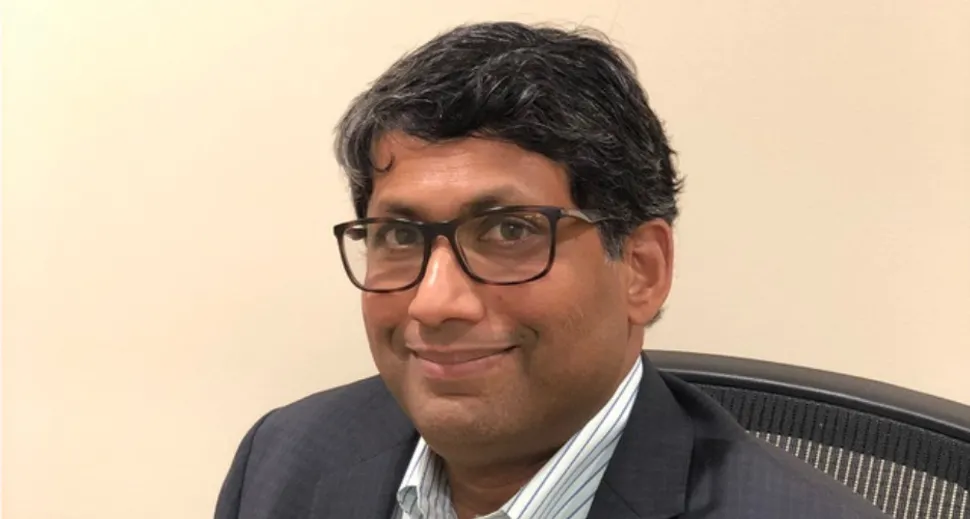
A great society exists when old men plant trees they will never sit under. So it's kind of like that, I see those as things that I've planted. But I will not be eating the fruits of those trees, you know?
- Parameswaran Hari
A drive to do something significant for humanity is in Dr. Parameswaran Hari’s DNA. If you wanted to build a researcher-clinician from scratch, extracting some of his genes in the lab to transplant into the next generation of medical pioneers wouldn’t be a bad idea.
So when he told the audience he intended to retire as a myeloma and cell therapy specialist to take on another significant challenge in cancer, it made sense. Nevertheless, a sense of shock hung over the rest of that annual Medical College of Wisconsin (MCW) Myeloma Patient and Caregiver Conference in Pewaukee, WI on October 9, 2021.
More than twenty years after coming to MCW, Hari concluded, “I feel like I can go to something else. Myeloma is in safe hands. These young investigators we have right now, they are wonderful. They are better than the previous generation of investigators. I think we need to make way for these young people to come up with a cure.” In other words, the time was right.
“I easily treated close to 2,500 myeloma patients,” said Hari, summing up his time at MCW. “I joined in 2002 as an assistant professor…one of four” in hematologic malignancies and the only myeloma “specialist on staff for almost eleven years…” Reflecting on the experience, “the sense of fulfillment you receive from helping somebody, [sometimes] without seeing a person, that [sense of] gratitude cannot be replicated.”
Hari had a devoted following of patients and was highly respected by his peers for both his vision and attention to detail. “My goal will be similar in the biotech industry,” Hari continued, “cell therapy for patients with solid tumors…is even a bigger challenge than myeloma; more people die from them. I think if we can get cellular therapy established for those types of tumors, it will be as big or bigger than CAR T.”
And while “nothing can replace the one-to-one” of being a treating physician, Hari admits:
“I will always be a doctor and I will be following the myeloma literature forever. And I will miss the pager that went off at the most inappropriate times and the life of a guy who saw 60-to-70 patients a week and the colleagues who were a very, very close knit team, after 20-plus years that becomes your home. That, I don't think, will ever go away.
“The bigger problem, solid tumors, are responsible for 90% of the cancer death in the world. The vast majority of people who die of cancer, die of solid tumors,” Hari summed up. “So I said, ‘okay, let's go to a bigger problem and see whether I can do something impactful there.'"
Now, almost a year-and-a-half after he departed the myeloma stage, many former patients and colleagues wonder, “What’s he been up to?”
Making Cell Therapies Obediently Effective
“I became a deep expert in myeloma,” said Hari recently, “and I still believe to do good work, you have to be a deep expert in something.” For those who know him, he’s still as driven and restless as ever. “I understand how cell therapies work in myeloma and as we now use genetically modified cells to treat cancer, I wanted to take that experience to go after the bigger problem.”
Hari recently became Chief Development Officer of Obsidian Therapeutics, which has a mission to “engineer…cell and gene therapies to deliver transformative outcomes for patients.”
At Obsidian, Hari’s scientific focus is to refine “an approach to actually take cells from tumors themselves, sort of the next wave of modified T cell therapies and empower them using fundamental technologies that can be applied to pretty much to any cellular therapy. For example, when you do CAR T, the hope is that it does whatever it needs to do in the body on its own. With Obsidian technology, the hope is that we can regulate T cell activity and make them to respond to another agent.”
Rather than being like smart bombs, Hari explains that it is much more fundamental. “Think of this cell therapy as being an attack dog who responds to a whistle or signal to do something and obeys the command to stop the attack too.” It is less a smarter therapy than an obediently effective one; one in which that physician has potentially much more control over their therapeutic activity.
“Controlling T-cells is a very tough thing” recalled Hari from his myeloma experiences, “I am here to develop technologies for solid tumors as the focus, but obviously there is nothing that prevents these type of technologies to be applied to liquid tumors if the evidence points us in that direction.” The bottom line is to use cells for therapy and regulate their activity as much as possible.
Between starting at Obsidian and leaving MCW, Hari spent a year at another biotech where he “gained a lot of valuable experience in real world drug development and how to approach regulatory agencies like the FDA on thinking about drug development as a whole.”
The opportunity to develop cell therapies with early stage biotechs and the potential to significantly change paradigms at even more fundamental stages remains an irresistible challenge and a big attraction for Hari.
Achieving in Wisconsin for Myeloma
From humble beginnings, MCW has become a “destination” for many myeloma patients due largely to Hari’s reputation. He put together a world-recognized staff of four myeloma specialists plus support personnel, has been the principal investigator of many seminal clinical trials, and has mentored many top myeloma specialists including Luciano Costa (University of Alabama at Birmingham), Anita D’Souza (MCW), Saurabh Chhabra (Mayo Clinic), Frank Cornell (formerly Vanderbilt, now head of U.S. medical affairs at AbbVie), and of course, his successor at MCW, Binod Dhakal.
His ambition to focus on myeloma when he thought cardiology would be his specialty, was born after the experience of treating a patient and piqued in 1998, “the day the news became public about Bart Barlogie using thalidomide,” the first drug in history to directly target the myeloma cell. (As an aside, Hari summed up, “It's interesting because one day it will become obsolete. Twenty years from now, IMiDs will likely not be considered such a big deal or used at all.”)
Until then, myeloma was seen as something of a “dead end” that only a few intellectually-oriented in the oncology medical community pursued. Barlogie’s experience changed that.
After joining MCW, Hari was integral to studies that identified and defined essential myeloma concepts like maintenance therapy, immunotherapy, and minimal residual disease (MRD).
“As I became established, I started doing trials to prolong the benefit of auto transplant by maintenance,” recalled Hari, “now, I think maintenance has added more to the lives of patients than almost anything that I can think of in the last ten years.”
The rapidly changing nature of myeloma knowledge, however, now has Hari wondering about “putting people on maintenance for a very long time. More studies now take that approach, turn it back and say, ‘Can we stop treatment for some?’”
When he moved away from myeloma, Hari was leading a study to understand how long-term use of lenalidomide (Revlimid) impacted patients and to create a tumor map physicians can use to determine which patients can come off maintenance. The trial is now led by Amrita Krishnan from City of Hope in Southern California, Hari expects results to be published in three-to-four years.
Hari collaborated with Costa to create a consortium of institutions for the MASTER study, an ongoing trial on use of immunotherapeutic therapy combinations with MRD determining the value of maintenance or stopping it in each patient. "We are trying to increase the upfront treatment to convert as many people to MRD negative as possible and then stop treatment. So I think getting people off of treatment and potentially curing is coming,” said Hari.
Hari also led the STaMINA study, which established that lenalidomide-based maintenance was the “go to” gold standard that has not been beaten yet. “I've been really excited about all the CAR T studies that I did in the last four years, five years, which led one approved CAR T agent and another one coming very soon in bispecifics.”
From One Pioneering Institution to Another
The doctor who he was to become must have been unimaginable for the medical school graduate who served cardiology fellowship in India in the early 90s. Hari left India for Britain, but cardiology lost its luster and soon thereafter he landed at Christie Hospital in Manchester, England, considered to be the first cancer center in the world.
“It had a very, very good myeloma program led by Prof. Howard Scarffe, people came there for myeloma from all over,” Hari remembered. “I landed up there to do bone marrow transplants and essentially ended up doing a lot of myeloma and getting interested in myeloma.”
Eventually that brilliant young doctor with sense of rudderless ennui was working in the world’s first hospital dedicated to treating cancer, the Christie Hospital in England.
In 1997 he found himself doing his first-ever bone marrow transplant, and “that first patient, you know, etched into my brain. “I would go to bed thinking about patients, wake up thinking about patients,” as Hari considered the years.
“As a trainee,” Dr. Hari recalled, “I didn’t know much about about the diseases that were being transplanted. We actually gave bone marrow, not stem cells, and didn’t have the antifungals and other drugs that are commonly used now.”
Indeed, bone marrow transplantation in 1997 was a very different experience than stem cell transplants in 2022.
“Transplant was a much, much more difficult deal and many patients did not make it,” said a reflective Dr. Hari. “Then I realized the answer to the question: Why would somebody go through this? Because we successfully transformed the lives of at least some of the people we treated. We felt this disease had actually had options. This is very similar to where cell therapy for solid tumors is today.”
Driven To Do Big Things
Medicine wasn’t in the cards for Dr. Parameswaran Hari. At least at first, anyway. But making the world a better place was.
“I wanted to do big things,” said Dr. Hari, reminiscing about his childhood, “I always thought it was quite likely that I would have ended up a politician, had my mother not forced me to go to medical school.” It wasn’t a choice.
“She said, ‘You have to go to medical school,’” he recalled. “So I ended up being in medical school and then somehow ended up in cardiology…And I was unsettled at first, all through residency, all through cardiology I felt that there was no sense of purpose.”
That was before Barlogie’s 1998 discovery, when the trajectory of Hari’s future changed forever.
Would Hari ever consider coming back to treating myeloma patients? “That's a possibility,” he muses, “I'm still keeping in touch with the myeloma world and know what's going on. Occasionally a patient contacts me, I give them advice, you know, so I'm still around. But it's a different life.”
A great society exists when old men plant trees they will never sit under. So it's kind of like that, I see those as things that I've planted. But I will not be eating the fruits of those trees, you know?
- Parameswaran Hari
A drive to do something significant for humanity is in Dr. Parameswaran Hari’s DNA. If you wanted to build a researcher-clinician from scratch, extracting some of his genes in the lab to transplant into the next generation of medical pioneers wouldn’t be a bad idea.
So when he told the audience he intended to retire as a myeloma and cell therapy specialist to take on another significant challenge in cancer, it made sense. Nevertheless, a sense of shock hung over the rest of that annual Medical College of Wisconsin (MCW) Myeloma Patient and Caregiver Conference in Pewaukee, WI on October 9, 2021.
More than twenty years after coming to MCW, Hari concluded, “I feel like I can go to something else. Myeloma is in safe hands. These young investigators we have right now, they are wonderful. They are better than the previous generation of investigators. I think we need to make way for these young people to come up with a cure.” In other words, the time was right.
“I easily treated close to 2,500 myeloma patients,” said Hari, summing up his time at MCW. “I joined in 2002 as an assistant professor…one of four” in hematologic malignancies and the only myeloma “specialist on staff for almost eleven years…” Reflecting on the experience, “the sense of fulfillment you receive from helping somebody, [sometimes] without seeing a person, that [sense of] gratitude cannot be replicated.”
Hari had a devoted following of patients and was highly respected by his peers for both his vision and attention to detail. “My goal will be similar in the biotech industry,” Hari continued, “cell therapy for patients with solid tumors…is even a bigger challenge than myeloma; more people die from them. I think if we can get cellular therapy established for those types of tumors, it will be as big or bigger than CAR T.”
And while “nothing can replace the one-to-one” of being a treating physician, Hari admits:
“I will always be a doctor and I will be following the myeloma literature forever. And I will miss the pager that went off at the most inappropriate times and the life of a guy who saw 60-to-70 patients a week and the colleagues who were a very, very close knit team, after 20-plus years that becomes your home. That, I don't think, will ever go away.
“The bigger problem, solid tumors, are responsible for 90% of the cancer death in the world. The vast majority of people who die of cancer, die of solid tumors,” Hari summed up. “So I said, ‘okay, let's go to a bigger problem and see whether I can do something impactful there.'"
Now, almost a year-and-a-half after he departed the myeloma stage, many former patients and colleagues wonder, “What’s he been up to?”
Making Cell Therapies Obediently Effective
“I became a deep expert in myeloma,” said Hari recently, “and I still believe to do good work, you have to be a deep expert in something.” For those who know him, he’s still as driven and restless as ever. “I understand how cell therapies work in myeloma and as we now use genetically modified cells to treat cancer, I wanted to take that experience to go after the bigger problem.”
Hari recently became Chief Development Officer of Obsidian Therapeutics, which has a mission to “engineer…cell and gene therapies to deliver transformative outcomes for patients.”
At Obsidian, Hari’s scientific focus is to refine “an approach to actually take cells from tumors themselves, sort of the next wave of modified T cell therapies and empower them using fundamental technologies that can be applied to pretty much to any cellular therapy. For example, when you do CAR T, the hope is that it does whatever it needs to do in the body on its own. With Obsidian technology, the hope is that we can regulate T cell activity and make them to respond to another agent.”
Rather than being like smart bombs, Hari explains that it is much more fundamental. “Think of this cell therapy as being an attack dog who responds to a whistle or signal to do something and obeys the command to stop the attack too.” It is less a smarter therapy than an obediently effective one; one in which that physician has potentially much more control over their therapeutic activity.
“Controlling T-cells is a very tough thing” recalled Hari from his myeloma experiences, “I am here to develop technologies for solid tumors as the focus, but obviously there is nothing that prevents these type of technologies to be applied to liquid tumors if the evidence points us in that direction.” The bottom line is to use cells for therapy and regulate their activity as much as possible.
Between starting at Obsidian and leaving MCW, Hari spent a year at another biotech where he “gained a lot of valuable experience in real world drug development and how to approach regulatory agencies like the FDA on thinking about drug development as a whole.”
The opportunity to develop cell therapies with early stage biotechs and the potential to significantly change paradigms at even more fundamental stages remains an irresistible challenge and a big attraction for Hari.
Achieving in Wisconsin for Myeloma
From humble beginnings, MCW has become a “destination” for many myeloma patients due largely to Hari’s reputation. He put together a world-recognized staff of four myeloma specialists plus support personnel, has been the principal investigator of many seminal clinical trials, and has mentored many top myeloma specialists including Luciano Costa (University of Alabama at Birmingham), Anita D’Souza (MCW), Saurabh Chhabra (Mayo Clinic), Frank Cornell (formerly Vanderbilt, now head of U.S. medical affairs at AbbVie), and of course, his successor at MCW, Binod Dhakal.
His ambition to focus on myeloma when he thought cardiology would be his specialty, was born after the experience of treating a patient and piqued in 1998, “the day the news became public about Bart Barlogie using thalidomide,” the first drug in history to directly target the myeloma cell. (As an aside, Hari summed up, “It's interesting because one day it will become obsolete. Twenty years from now, IMiDs will likely not be considered such a big deal or used at all.”)
Until then, myeloma was seen as something of a “dead end” that only a few intellectually-oriented in the oncology medical community pursued. Barlogie’s experience changed that.
After joining MCW, Hari was integral to studies that identified and defined essential myeloma concepts like maintenance therapy, immunotherapy, and minimal residual disease (MRD).
“As I became established, I started doing trials to prolong the benefit of auto transplant by maintenance,” recalled Hari, “now, I think maintenance has added more to the lives of patients than almost anything that I can think of in the last ten years.”
The rapidly changing nature of myeloma knowledge, however, now has Hari wondering about “putting people on maintenance for a very long time. More studies now take that approach, turn it back and say, ‘Can we stop treatment for some?’”
When he moved away from myeloma, Hari was leading a study to understand how long-term use of lenalidomide (Revlimid) impacted patients and to create a tumor map physicians can use to determine which patients can come off maintenance. The trial is now led by Amrita Krishnan from City of Hope in Southern California, Hari expects results to be published in three-to-four years.
Hari collaborated with Costa to create a consortium of institutions for the MASTER study, an ongoing trial on use of immunotherapeutic therapy combinations with MRD determining the value of maintenance or stopping it in each patient. "We are trying to increase the upfront treatment to convert as many people to MRD negative as possible and then stop treatment. So I think getting people off of treatment and potentially curing is coming,” said Hari.
Hari also led the STaMINA study, which established that lenalidomide-based maintenance was the “go to” gold standard that has not been beaten yet. “I've been really excited about all the CAR T studies that I did in the last four years, five years, which led one approved CAR T agent and another one coming very soon in bispecifics.”
From One Pioneering Institution to Another
The doctor who he was to become must have been unimaginable for the medical school graduate who served cardiology fellowship in India in the early 90s. Hari left India for Britain, but cardiology lost its luster and soon thereafter he landed at Christie Hospital in Manchester, England, considered to be the first cancer center in the world.
“It had a very, very good myeloma program led by Prof. Howard Scarffe, people came there for myeloma from all over,” Hari remembered. “I landed up there to do bone marrow transplants and essentially ended up doing a lot of myeloma and getting interested in myeloma.”
Eventually that brilliant young doctor with sense of rudderless ennui was working in the world’s first hospital dedicated to treating cancer, the Christie Hospital in England.
In 1997 he found himself doing his first-ever bone marrow transplant, and “that first patient, you know, etched into my brain. “I would go to bed thinking about patients, wake up thinking about patients,” as Hari considered the years.
“As a trainee,” Dr. Hari recalled, “I didn’t know much about about the diseases that were being transplanted. We actually gave bone marrow, not stem cells, and didn’t have the antifungals and other drugs that are commonly used now.”
Indeed, bone marrow transplantation in 1997 was a very different experience than stem cell transplants in 2022.
“Transplant was a much, much more difficult deal and many patients did not make it,” said a reflective Dr. Hari. “Then I realized the answer to the question: Why would somebody go through this? Because we successfully transformed the lives of at least some of the people we treated. We felt this disease had actually had options. This is very similar to where cell therapy for solid tumors is today.”
Driven To Do Big Things
Medicine wasn’t in the cards for Dr. Parameswaran Hari. At least at first, anyway. But making the world a better place was.
“I wanted to do big things,” said Dr. Hari, reminiscing about his childhood, “I always thought it was quite likely that I would have ended up a politician, had my mother not forced me to go to medical school.” It wasn’t a choice.
“She said, ‘You have to go to medical school,’” he recalled. “So I ended up being in medical school and then somehow ended up in cardiology…And I was unsettled at first, all through residency, all through cardiology I felt that there was no sense of purpose.”
That was before Barlogie’s 1998 discovery, when the trajectory of Hari’s future changed forever.
Would Hari ever consider coming back to treating myeloma patients? “That's a possibility,” he muses, “I'm still keeping in touch with the myeloma world and know what's going on. Occasionally a patient contacts me, I give them advice, you know, so I'm still around. But it's a different life.”

about the author
Greg Brozeit
Greg Brozeit has been with the HealthTree Foundation since 2015 when he began volunteering for the Myeloma Crowd. Prior to that he worked with Dr. Bart Barlogie and the International Myeloma Foundation, inaugurating many myeloma patient advocacy and education programs.
More on Core Education
Trending Articles
Upcoming Events




Get the Latest Multiple Myeloma Updates, Delivered to You.
By subscribing to the HealthTree newsletter, you'll receive the latest research, treatment updates, and expert insights to help you navigate your health.
Together we care.
Together we cure.
3x Faster.

